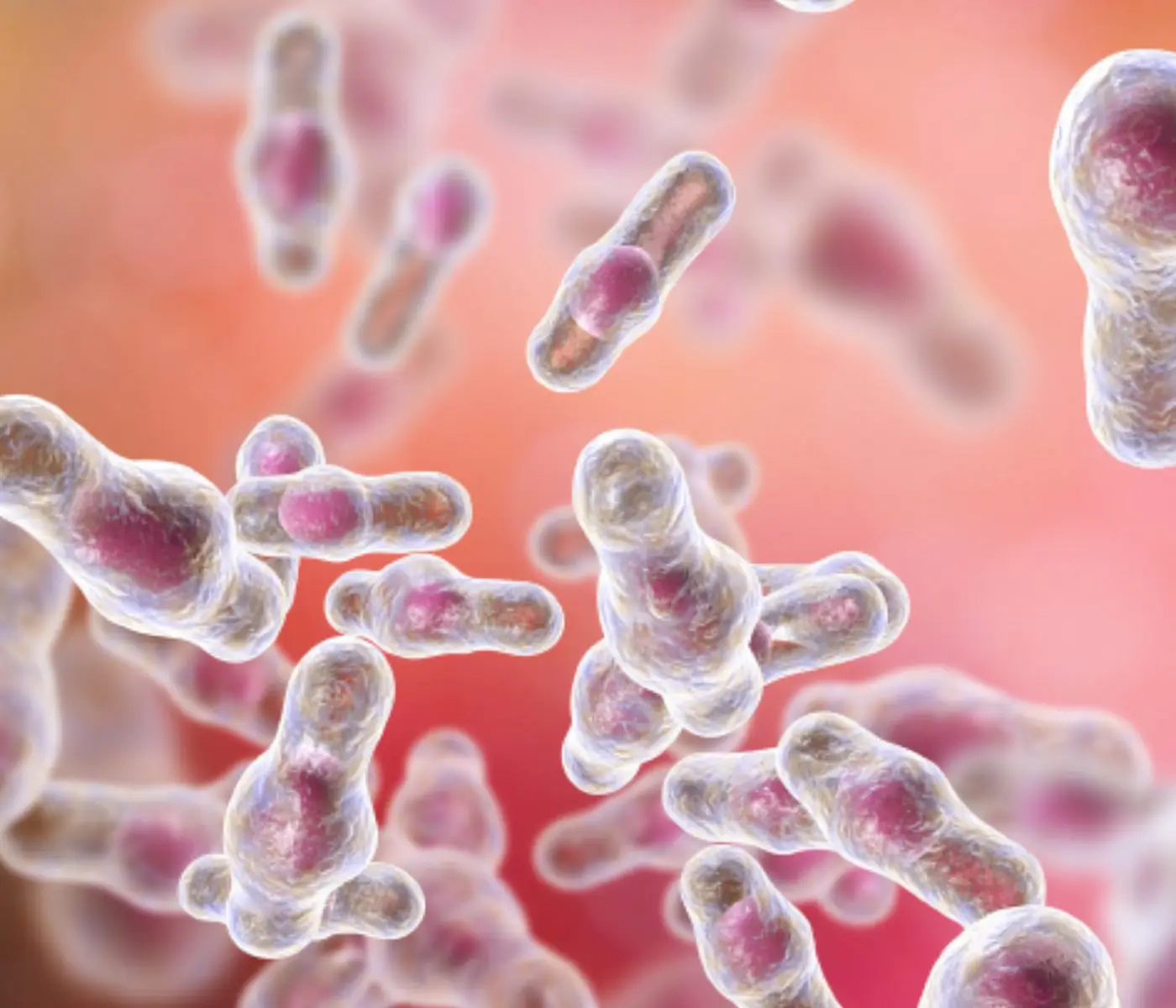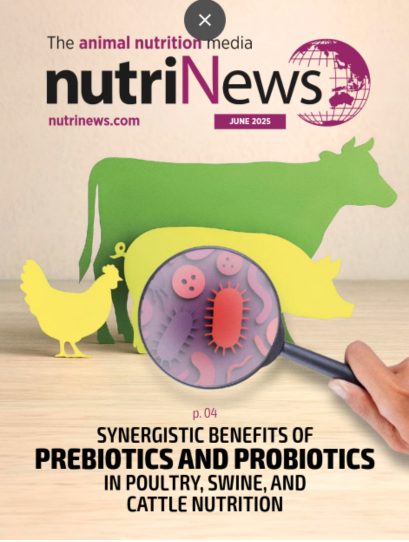Smart Nutrition: Targeted Strategies to Combat Necrotic Enteritis in Broilers
Enteritis, particularly necrotic enteritis caused by Clostridium perfringens, a naturally occurring bacterium in chickens’ guts, is a significant challenge in broiler production. Under certain conditions, this bacterium multiplies rapidly and releases toxins that damage the intestinal lining, leading to inflammation, necrosis (death of tissue), and severe disruption of gut health leading to substantial economic losses to poultry producers.
The small intestine, particularly the jejunum and ileum, is the primary site of infection and necrosis. The disease has both
- acute and
- subclinical forms,
each presenting unique challenges for poultry production and management.
Acute Necrotic Enteritis: This is characterized by sudden mortality, often with minimal preceding signs. Mortality rates can be high in severe outbreaks.
Subclinical Necrotic Enteritis: This leads to chronic damage to the gut, resulting in poor growth performance, reduced feed conversion efficiency, and increased susceptibility to other diseases.
Clinical Signs
Acute Form: Sudden death of affected birds without significant prior symptoms, lethargy, depression, and reduced feed intake may occur before death in some cases.
Subclinical Form: Poor weight gain, wet litter due to increased diarrhoea, reduced feed conversion ratio (FCR).
Effective control requires a multifaceted approach, with nutrition playing a pivotal role. Below, we explore key nutritional strategies to prevent and manage enteritis, focusing on maintaining gut health and reducing the proliferation of pathogens.
- Optimize Feed Formulation
The foundation of controlling enteritis lies in optimizing feed formulation. Diets should be carefully balanced to reduce substrates that encourage pathogenic bacterial growth. Excess crude protein, particularly from indigestible sources, can serve as a food source for C. perfringens.
By lowering crude protein levels and supplementing with synthetic amino acids, nutrient digestibility is enhanced, and gut fermentation of undigested protein is minimized. Similarly, using highly digestible carbohydrates prevents excessive fermentation in the gut, maintaining a stable microbial environment and reducing the risk of dysbiosis (an imbalance in the microorganisms that live in the body, known as the microbiome).
- Incorporate Probiotics
Probiotics, which are beneficial microorganisms, can play a critical role in controlling enteritis by balancing the gut microbiota. By competing for nutrients and adhesion sites, probiotics such as Lactobacillus spp., Bifidobacterium spp., and Bacillus spp. inhibit the proliferation of pathogenic bacteria.
Additionally, they enhance gut barrier integrity and stimulate the immune response. Regular supplementation of probiotics in broiler diets not only improves gut health but also promotes overall performance, making it a cornerstone strategy in enteritis management.
- Use Prebiotics
Prebiotics are non-digestible food ingredients that selectively promote the growth of beneficial gut bacteria. Common examples include mannan-oligosaccharides (MOS), galacto-oligosaccharides (GOS), xylo-oligosaccharides (XOS), fructo-oligosaccharides (FOS), and beta-glucans.
These compounds support gut health by fostering a microbial environment that suppresses pathogens like C. perfringens. Prebiotics also enhance the gut’s structural integrity by stimulating the production of mucus and short-chain fatty acids, further contributing to the prevention of enteritis.
- Supplement with Enzymes
Enzymes play a vital role in improving nutrient digestibility and reducing the availability of substrates that pathogenic bacteria can utilize. Enzymes such as xylanase, protease, and phytase break down non-starch polysaccharides, undigested proteins, and phytates, respectively.
This reduces intestinal irritation and minimizes nutrient residues that could fuel bacterial overgrowth. Incorporating enzymes in broiler diets not only prevents enteritis but also enhances overall feed efficiency and growth performance.
- Introduce Organic Acids
Organic acids are another effective nutritional intervention for controlling enteritis. By lowering the pH of the gastrointestinal tract, organic acids such as formic acid, propionic acid, and butyric acid create an unfavourable environment for pathogens.
Butyric acid, in particular, has additional benefits as it directly supports gut epithelial health and repair. Regular supplementation of organic acids in feed or water can significantly reduce the risk of enteritis and improve gut functionality.
- Include Essential Oils and Phytogenics
Essential oils and phytogenics are natural antimicrobial agents that can support gut health. Oregano oil, thyme oil, and garlic extract are well known for their antibacterial, anti-inflammatory, and antioxidant properties.
These compounds inhibit the growth of C. perfringens and other harmful microorganisms while promoting a healthy gut microbial balance. Their inclusion in broiler diets provides a natural and sustainable alternative to traditional antibiotics to control the pathogens’ load.
- Optimize Dietary Fiber
Dietary fiber, both soluble and insoluble, plays a critical role in maintaining gut health. Insoluble fibers, such as wheat bran and cellulose, promote gut motility and prevent the accumulation of harmful bacteria.
Soluble fibers, like pectin and beet pulp, undergo fermentation to produce short-chain fatty acids that nourish the gut lining and inhibit pathogens. A balanced inclusion of dietary fiber in broiler diets prevents intestinal dysbiosis and supports overall gut integrity.
- Focus on Feed Hygiene
Ensuring the hygiene of feed ingredients is crucial in preventing enteritis. Contaminated feed can introduce pathogens and mycotoxins that compromise gut health. Using heat-treated feed or pelleting can significantly reduce microbial load.
Proper storage practices, such as keeping feed dry and free from pests, also help minimize contamination. High feed hygiene standards are an essential component of a comprehensive enteritis control strategy.
- Supplement with Antioxidants
Antioxidants help reduce oxidative stress in the gut, which can exacerbate enteritis. Vitamins such as E and C, along with trace minerals like selenium, are critical for maintaining a robust immune response.
These nutrients protect the gut lining from damage and enhance its resilience against infections. Including antioxidants in broiler diets ensures that birds can better withstand enteric challenges.
- Use Immunomodulators
Immunomodulators, such as beta-glucans and nucleotides, enhance the bird’s natural immune response. Beta-glucans, derived from yeast cell walls, stimulate macrophages and other immune cells, enabling them to combat pathogens effectively. Nucleotides, which are building blocks of DNA and RNA, support rapid cell turnover and repair in the gut lining. By strengthening the immune system, immunomodulators reduce the incidence and severity of enteritis in broilers.
- Add Water Additives
Treated drinking water can serve as a valuable tool for managing enteritis. Acidifiers, such as citric acid, help maintain an optimal gut pH and inhibit pathogen growth.
Probiotics and electrolytes can also be administered through water to provide additional gut support, especially during periods of stress or illness. Water additives offer a practical way to ensure consistent nutrient delivery and enhance gut health.
Practical Implementation Tips
While each of these strategies is effective individually, their synergistic application yields the best results. For example, combining probiotics with organic acids and dietary fiber creates a multi-layered defence against enteritis. It is also important to tailor these strategies to the specific needs of the flock, considering factors such as age, health status, and environmental conditions. Additionally, routine monitoring of gut health and pathogen load ensures that nutritional interventions remain effective, and adjustments can be made as needed.
Conclusion
Enteritis remains a significant challenge in broiler production, but it can be effectively managed through well-designed nutritional strategies. By focusing on gut health, nutrient digestibility, and pathogen suppression, poultry producers can reduce the incidence and severity of this condition.
The integration of feed optimization, probiotics, prebiotics, enzymes, organic acids, and other supportive measures ensures a holistic approach to enteritis control. Combined with strong management practices and regular monitoring, these nutritional interventions not only improve bird health and performance but also enhance the sustainability and profitability of broiler production.












